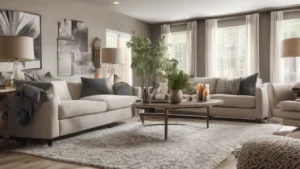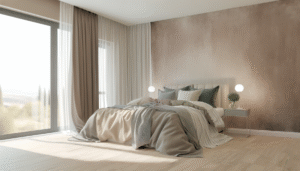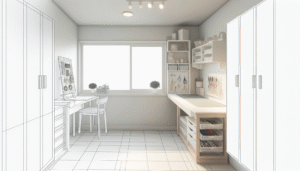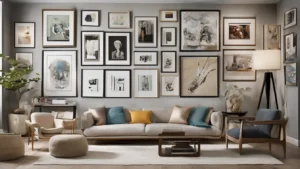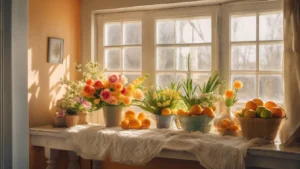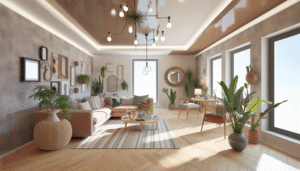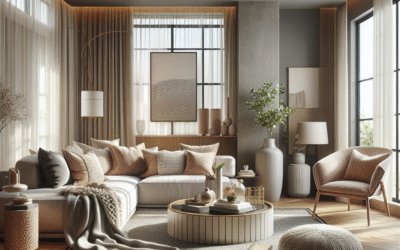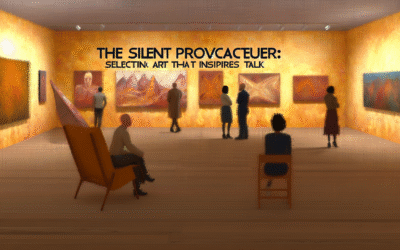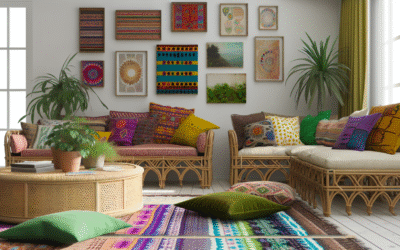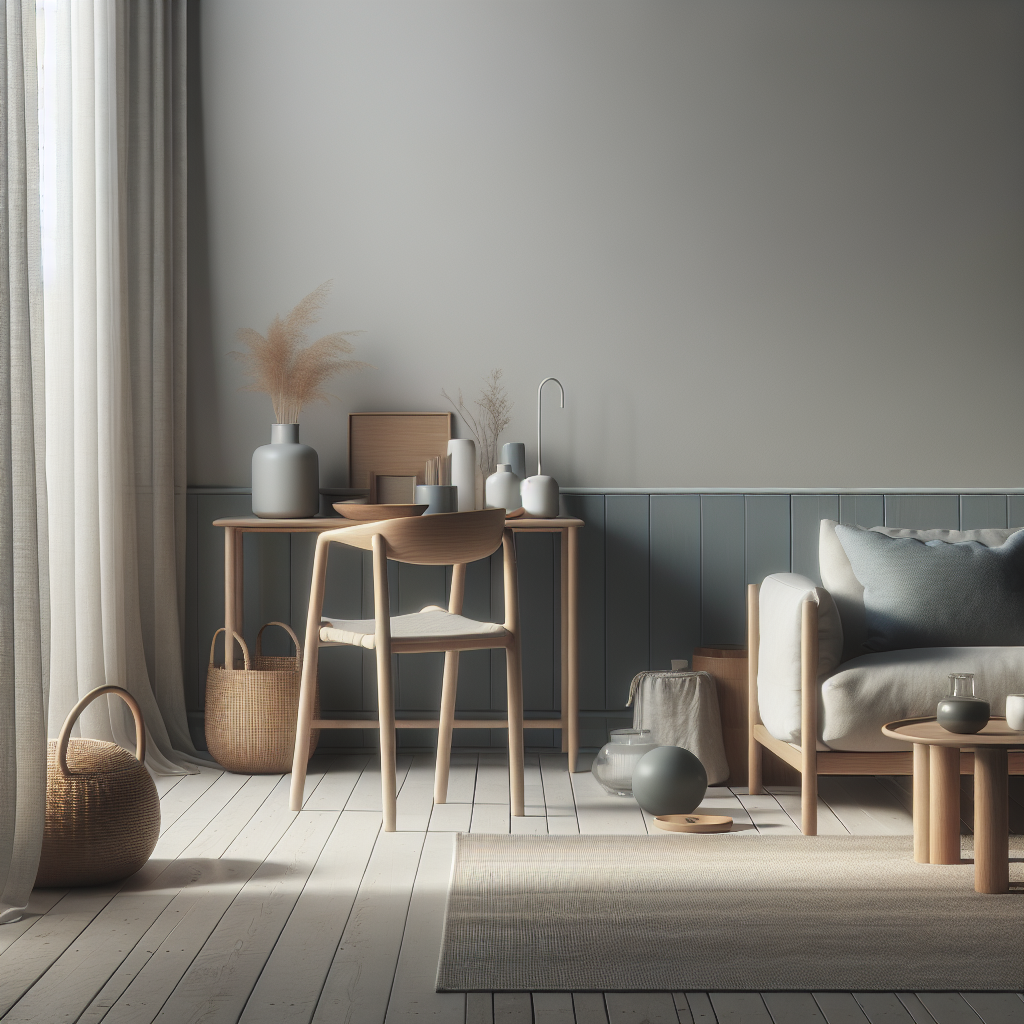
Color Palettes in Scandinavian Design: A Guide to Minimalist Aesthetics
Scandinavian design beckons us into a world of simplicity, functionality, and a certain serene beauty. It’s renowned for its clean lines and minimalistic vibe, but you know what? The colors play a crucial role in all of this. Let’s stroll through the nuances of color palettes that breathe life into this design ethos and explore why these choices resonate so deeply—both emotionally and aesthetically.
The Essence of Scandinavian Design
Before we jump into colors, let’s chat about what Scandinavian design is all about. The term typically refers to a design philosophy that originated in the Nordic countries: Denmark, Norway, Sweden, Finland, and Iceland. This approach is not just about aesthetics; it’s a lifestyle, a celebration of functionality wrapped in beauty.
Imagine walking into a room where everything serves a purpose, yet feels effortless and inviting. That’s Scandinavian design. It emphasizes natural materials, light, and a sense of warmth—all while keeping things practical. But how do colors fit into this carefully curated world?
Spotlight on Neutral Tones
Neutral colors are like the unsung heroes of Scandinavian design. Think about it: white, greys, and soft beiges create a sense of calm, allowing the architectural features and textures to shine. Want a cozy feel? Light greys and off-whites can soften a hard, modern edge, making a space feel inviting rather than clinical.
Moreover, these hues can open up spaces, reflecting light beautifully. Picture a sun-filled room with white walls and large windows—inviting, right? But don’t dismiss the stories they tell. Whites can feel fresh and clean, while soft greys exude sophistication and warmth.
The Power of Earthy Hues
Let’s add a dash of earthy tones into the mix. Shades like terracotta, rustic ochre, and muted greens echo the natural landscapes of Scandinavia. These colors bring a pinch of nature indoors and create a grounded atmosphere.
You know what’s compelling? The contrast between these warmth-infused shades and the cooler hues prevalent in traditional Scandinavian palettes. This juxtaposition can make a room feel both balanced and dynamic. Imagine earthy accents in a predominantly neutral setting; they invite touch and warmth, softening the minimalist approach beautifully.
Bold Colors as Accents
Now, let’s talk about the fun part—bold colors! While Scandinavian design often leans towards neutrality, the infusion of bold colors can create striking focal points. Think deep blues, vibrant yellows, or even a rich ruby red.
These colors can be introduced through accessories—think cushions, art, or a stunning piece of furniture. They create stunning contrasts and grab attention without overwhelming the senses. Ever walked into a room and found your eye darting towards a vibrant piece of art? That’s the magic of accent colors!
Color Influence of Nature
Nature is a perennial source of inspiration in Scandinavian design. The muted palette of forests, seas, and skies influences the choices designers make. For instance, the deep blues of the Northern Sea or soft pastels of a sunset can inform color choices inside homes.
Ever seen a room where the colors echo the hues of the dawn? It brings a sense of peace, doesn’t it? This connection with the natural environment helps create spaces that feel harmonious and balanced. It’s like having a slice of the Scandinavian landscape indoors.
Textiles and Patterns
Let’s weave in some textiles, shall we? Fabrics play a crucial role in Scandinavian design and can be an incredible way to introduce color. Soft wool throws, patterned rugs, and textured curtains bring warmth and layers to a minimalist space.
Patterns too! Think light, airy patterns that don’t clash but enhance. Geometric shapes or floral prints can be uplifting, bursting into a space without overshadowing its minimalist intent. You can think of them as gentle compliments rather than loud statements—perfectly balanced!
Lighting: The Color Enhancer
Okay, let’s shed some light on lighting—quite literally! Natural light plays an immense role in how colors are perceived. Scandinavian countries are famous for their long summer days and short winters, which influences how homes are designed.
A well-placed lamp or a stunning overhead fixture can enhance colors, making a warm beige feel cozy or a bold blue feel serene. The key is layering—using different types of lighting to create an ambiance that complements your color choices.
Sustainability and Ethical Choices
In a world that’s leaning towards sustainability, Scandinavian design champions eco-friendly choices. Many designers use natural materials and colorants sourced responsibly. This includes reclaimed wood, organic textiles, and water-based paints.
This ethical approach not only captures a color palette but also resonates with a holistic lifestyle. It’s about honoring nature while creating beautiful spaces, aligning with the core values of Scandinavian design.
Creating Your Own Scandinavian-Inspired Space
Ready to add a touch of Scandinavian flair to your home? Start by refining your color palette. Embrace those calming neutrals while balancing them with gentle earthy tones and an emotional spark of bold accents. Piece by piece, you can carve out a sanctuary that feels uniquely yours.
And remember, the beauty of Scandinavian design lies in the individual stories each color can tell within your space. Don’t rush—let it unfold naturally as you curate a reflection of your style.
Color Psychology in Design
Ever thought about how colors affect mood? Scandinavian design capitalizes on this concept beautifully. It’s not just about aesthetics; it’s about the feelings evoked by your surroundings.
Soft blues can instill calm, while cheerful yellows can energize a space. Understanding color psychology helps in crafting a harmonious living environment. Which colors resonate with you? Take a moment and think about how you respond to different shades!
Scandinavian Design Trends Today
Design trends come and go, but the principles of Scandinavian design remain timeless. Recently, we’ve witnessed a shift towards more bold expressions within this minimalist framework. Designers are playing with deeper colors and mixed textures to create more dynamic spaces.
This evolution keeps the tradition fresh while maintaining its core values. One standout trend is the fusion of contemporary furniture with traditional Nordic elements—creating spaces that feel both rooted and modern.
Final Thoughts: The Heart of Scandinavian Color Palettes
In wrapping up, it’s clear that color palettes are fundamental to Scandinavian design’s minimalist aesthetic. They balance simplicity with depth, allowing functionality and beauty to coexist seamlessly. The essence lies in gentle harmonies and carefully chosen contrasts—all working in tandem to create spaces that feel reminiscent of the Northern landscapes.
This journey through color invites you to explore, engage, and ultimately, find your own rhythm within your space. After all, who doesn’t want a home that feels as calming as a breath of fresh Nordic air?
FAQ Section
What are the key colors in Scandinavian design?
Key colors in Scandinavian design typically include soft neutrals like whites, grays, and beiges, as well as earthy tones and occasional bold accents like deep blues or mustard yellows.
How do I create a Scandinavian color palette for my home?
Begin with neutral base colors, then layer in earthy shades and accent colors. Use textiles and accessories to introduce depth and variation without overwhelming the space.
Why is natural light important in Scandinavian design?
Natural light enhances the perception of colors, making spaces feel more inviting and connected to the outdoors, which is a core value of Scandinavian design.
Can I mix bold colors in Scandinavian design?
Absolutely! Bold colors can be used as accents to provide contrast and energy, while still keeping the overall look harmonious if balanced with neutrals.
What role does sustainability play in Scandinavian design?
Sustainability is central to Scandinavian design, emphasizing the use of responsibly sourced materials, eco-friendly paints, and practices that honor the environment.
How are textiles used in Scandinavian interiors?
Textiles add warmth and texture, with options like wool throws and patterned cushions enhancing comfort and inviting coziness to minimalist spaces.
DISCLAIMER
The information provided in this article is for general informational purposes only. Always consult a professional for specific advice regarding design standards and color choices.
Categories
- Accent Walls & Ceilings (61)
- Art Curation & Gallery (62)
- Bedding Style Trends (68)
- Bedroom Makeover (81)
- Bohemian & Eclectic Styles (58)
- DIY & Budget-Friendly Decor (64)
- Eco-Friendly Design (62)
- Furniture Care (71)
- Home Decor & Design Ideas (162)
- Home Wellness Spaces (59)
- Integrated Outdoor Living (67)
- Japandi Style (61)
- Kids and Nursery Decor (59)
- Living Room Decor (79)
- Mix & Match Techniques (73)
- Modern & Contemporary Design (66)
- Rug Sizing & Placement (73)
- Scandinavian Design Inspiration (20)
- Seasonal Home Decor (79)
- Small Space Solutions (73)
- Wall Art & Painting Tips (77)
Recent Comments
Archives
Product Gallery
-
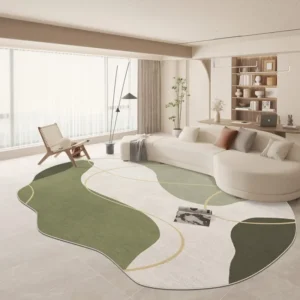 Large Area Green Rugs for Bedroom Nordic Living Room Decoration Shaped Carpet Irregular Plush Lounge Rug Home Thick Washable Mat
Rated 5.00 out of 5$55.01 – $346.86Price range: $55.01 through $346.86
Large Area Green Rugs for Bedroom Nordic Living Room Decoration Shaped Carpet Irregular Plush Lounge Rug Home Thick Washable Mat
Rated 5.00 out of 5$55.01 – $346.86Price range: $55.01 through $346.86 -
 Nordic Style Rugs for Bedroom Morandi Living Room Decoration Carpet Large Area Geometry Lounge Rug Home Cloakroom Non-slip Mat
Rated 5.00 out of 5$39.51 – $598.43Price range: $39.51 through $598.43
Nordic Style Rugs for Bedroom Morandi Living Room Decoration Carpet Large Area Geometry Lounge Rug Home Cloakroom Non-slip Mat
Rated 5.00 out of 5$39.51 – $598.43Price range: $39.51 through $598.43 -
 Irregular Shapes Living Room Decoration Carpet Modern Style Rugs for Bedroom Home Thicken Plush Rug Fluffy Soft Lounge Floor Mat
Rated 4.83 out of 5$55.91 – $347.82Price range: $55.91 through $347.82
Irregular Shapes Living Room Decoration Carpet Modern Style Rugs for Bedroom Home Thicken Plush Rug Fluffy Soft Lounge Floor Mat
Rated 4.83 out of 5$55.91 – $347.82Price range: $55.91 through $347.82

